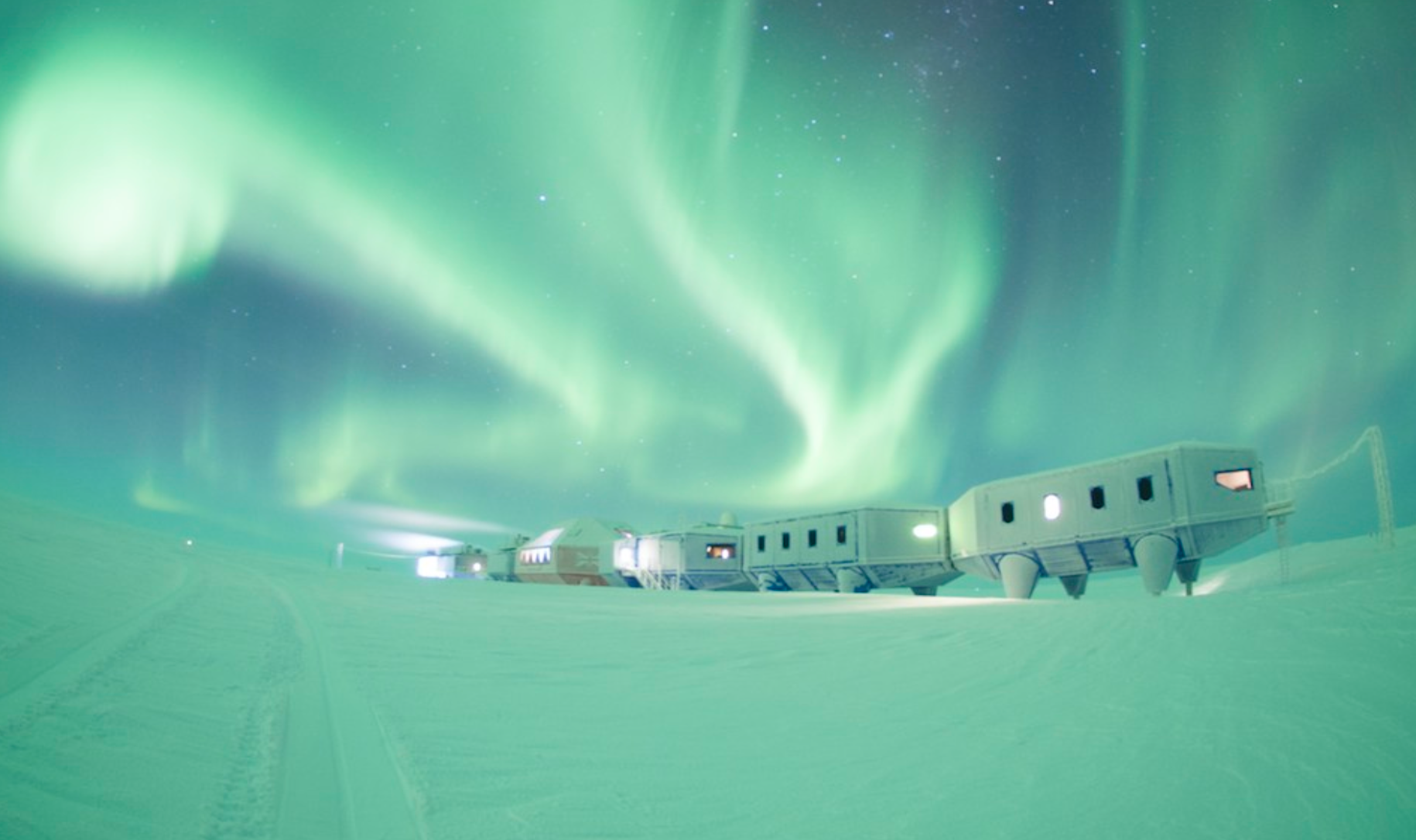
Lancement de l’écothèque
Augures Lab Scénogrrrraphie et Villette Makerz ont le plaisir de vous inviter au lancement de l'écothèque, plateforme collaborative de l'écoscénographie

Ice Lab: New Architecture and Science in Antarctica
Ice Lab will present some of the most innovative and progressive examples of contemporary architecture in Antarctica. The first exhibition of its kind, it will draw together projects that not only utilise cutting-edge technology and engineering, but have equally considered aesthetics, sustainability and human needs in their ground-breaking designs for research stations.
Initiated by the British Council and curated by The Arts Catalyst, Ice Lab will feature four international projects: Halley VI, UK(Hugh Brougton Architects) Princess Elizabeth, Belgium(International Polar Foundation), Bharati, India (bof architekten/IMS), Jang Bogo, South Korea (Space Group), and the Iceberg Living Station (MAP Architects) – a speculative design for a future research station to be entirely made from compacted snow.
The visually rich exhibition will also highlight the diverse science that takes place on the frozen continent – from collecting 4.5 billion year old meteorites that illuminate how the solar system was formed to drilling ice cores whose bubbles of ancient air reveal the earth’s climate history; from cutting edge astronomy peering into the world’s clearest skies to studying its Dry Valleys, the closest thing to ‘Mars on Earth’.
Torten Lauschmann has made two a new audio and light works, ‘Whistler’ and ‘Ice Diamond’, in response to a commission from The Arts Catalyst especially for the exhibition. The Glasgow-based artist will create this work in collaboration with ‘We Made That’, the exhibition’s designers.
Drawing on a number of archives and collections Ice Lab will include original drawings, models, photographs, films, ephemera and sources of inspiration for these highly specialised, sci-fi looking infrastructures – the closest thing to future space stations on the Moon and on Mars.
The featured projects are:
British Antarctic Survey’s Halley VI The first fully relocatable polar research station in the world became fully operational in February 2013 and signals a new dawn for 21st Century polar research. Opening 100 years after Captain Scott’s famed Antarctic expeditions, this new state of the art facility, designed by Hugh Broughton Architects and engineered by AECOM (UK) fulfils the UK’s ambition to remain at the forefront of scientific endeavour. Located 10,000 miles from the UK on a floating ice shelf, the new station is designed to be self-sufficient, able to withstand freezing winter temperatures of minus 55ºC, have minimal impact on Antarctica’s pristine environment, and be an aesthetically stimulating place to live and work.
Princess Elisabeth Antarctica Conceived, designed, constructed and operated by the International Polar Foundation (Belgium), Princess Elisabeth is Antarctica’s first zero-emission station. Perched on a nunatuk, 200km from the coast, at an altitude of 1400m, the aerodynamic stainless steel structure can withstand strong Antarctic wind, and is layered so that no form of interior heating is needed. The station seamlessly integrates renewable wind and solar energy, water treatment facilities, passive building technologies and a smart grid for maximising energy efficiency.
Bharati Research Station India’s third Antarctic research station by bof Architekten / IMS (Germany) is a striking modernist structure made from 134 prefabricated shipping containers. Wrapped in a special aluminium case its extensive glazing offers magnificent panoramic views whilst withstanding powerful winds, below 40 degree Celsius temperatures, blizzards and unfathomable loads.
Jang Bogo Korea is becoming a significant player in Antarctic research and Jang Bogo, by Space Group (South Korea), will be one of the largest year-round bases on the continent when it opens in 2014. The station’s aerodynamic triple-arm design will provide resistance to the elements and accommodate up to 60 personnel during the busy summer season.
Iceberg Living Station A speculative design by David Garcia / MAP Architects (Denmark) for a future research station made entirely from ice, Iceberg Living Station negates the need to transport foreign materials to Antarctica. The station will be holed out of a large iceberg, using caterpillar excavators that are traditionally used to clear snow. It will eventually melt, resolving the issue of removing it at the end of its life course.
Architecture and Design Scotland is presenting a varied events programme of film screenings, talks and workshops in architecture, design and science.
For bookings and further information please email events@ads.org.uk
Ice Lab Pecha Kucha
6pm 2 Oct 2013
Tickets £6/£3
An evening exploration of extreme architecture, science and sustainability featuring an entertaining mix of architects, filmmakers, climate change scientists and designers.
MOSI is presenting a series of Ice Lab related events during Manchester Science Festival. Details and booking information manchestersciencefestival
Polar research stations: Meeting the challenge of isolated living
Fri 25 Oct 2013 6.30pm, doors open 6pm
Hugh Broughton, architect of a US observatory on the Greenland ice cap and two Antarctic Research Stations, discusses the design of his polar projects and examines the ways in which the technologies and design principles employed in Polar Regions can be used to ensure environmentally responsible and resilient development elsewhere on the planet for generations to come.
Architecture in the extreme environments
Fri 1 Nov 2013 6.30pm, doors open 6pm
Architect David A Garcia travels from pole to pole, through a series of speculative and pragmatic projects, to discuss a new language and approach to architecture in extreme environments.
Augures Lab Scénogrrrraphie et Villette Makerz ont le plaisir de vous inviter au lancement de l'écothèque, plateforme collaborative de l'écoscénographie
L’Ecole des Arts Décoratifs co-organise la 1ère Biennale sur la nature et le vivant

